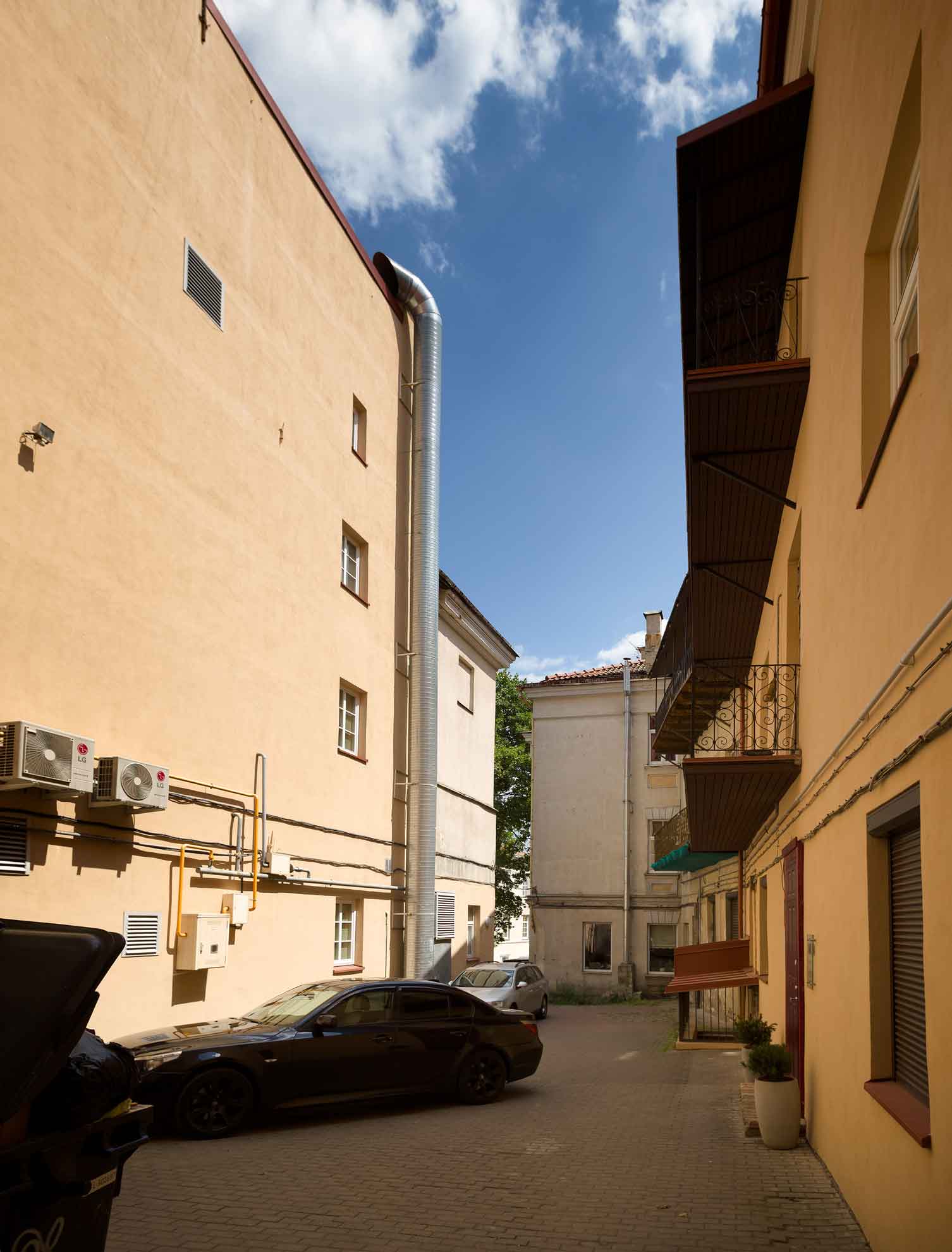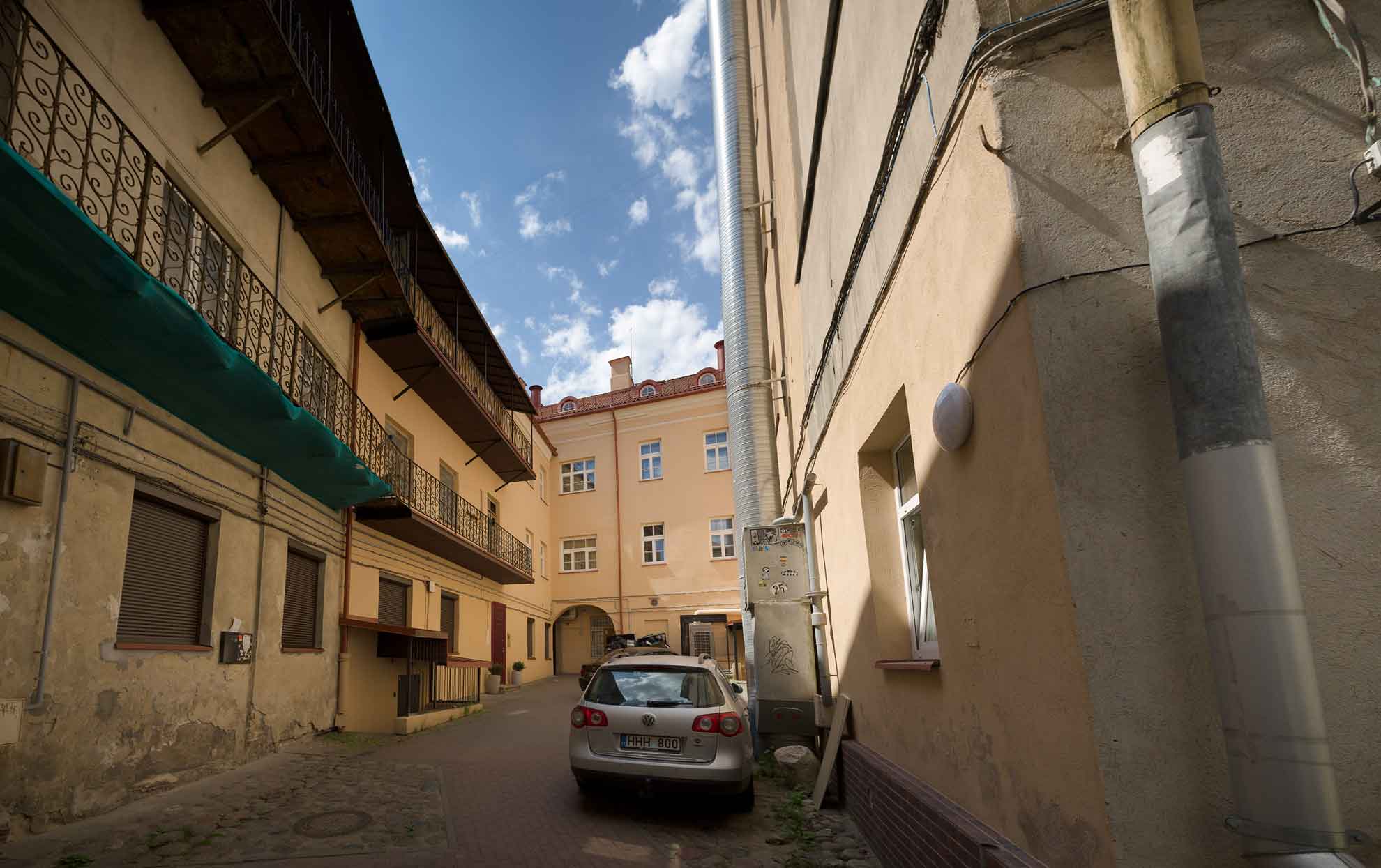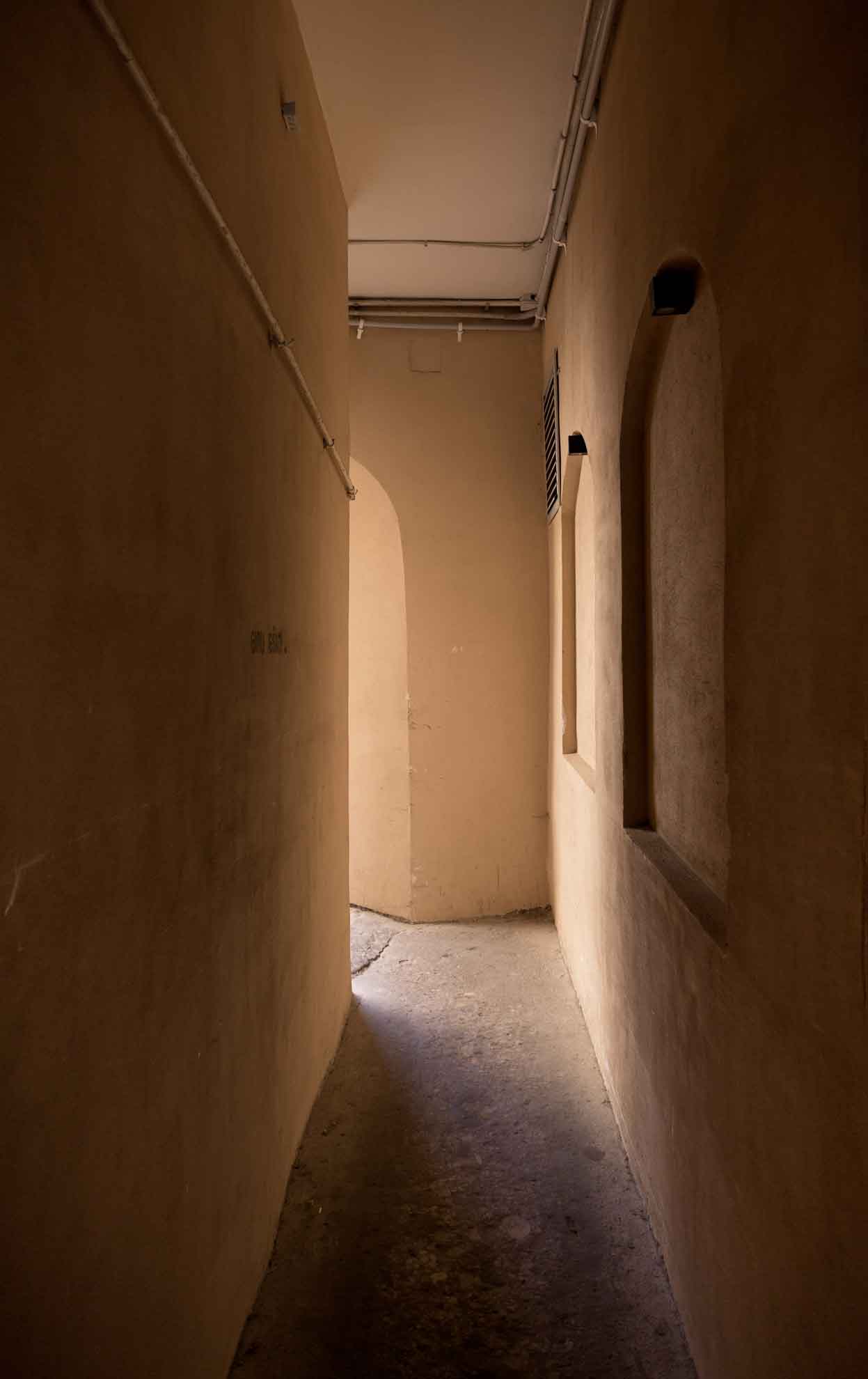36 Pilies Street

Photographer – Tomas Kapočius
36 Pilies Street. 2018
Lithuanian Art Museum

Photographer – Tomas Kapočius
36 Pilies Street courtyard. 2018
Lithuanian Art Museum

Photographer – Tomas Kapočius
36 Pilies Street courtyard. 2018
Lithuanian Art Museum

Photographer – Tomas Kapočius
36 Pilies Street. 2018
Lithuanian Art Museum
Individuals
JURGIS GUTAS (1769–1836)
He was a pharmacist and public figure. He moved to Vilnius from Prussia, and bought a house on Pilies Street in 1800 (present-day 36 Pilies Street), where he opened a pharmacy. He was an honourable member of the Masonic Lodge, and one of the founders of the Vilnius Medical Society. Gutas was the head of the Pharmacy Department of the first professional pharmacists’ organisation in Lithuania, the Vilnius Medical Society (1819). The death of this famous Vilnius pharmacist in 1836 is shrouded in mystery. It is said that Duke Ludwig Sayn-Wittgenstein, in wanting to take control of the property of his wife Stefania Radziwiłł, decided to kill her and acquired some poison for this from the pharmacist Gutas. In 1832 the 23-year-old duchess died (relatives claimed her death was due to a lung illness). Four years later, Gutas was discovered brutally slain in his home.
EMILIJA VILEIŠIENĖ (1861–1935)
She was a Lithuanian activist in the Vilnius Region and an active public figure. She attended the Saint Petersburg Institute for Noble Girls, participated in the city’s student public activities and acted in Lithuanian plays. She lived in Vilnius from 1897. In 1900 she married the doctor and public figure Antanas Vileišis, becoming highly involved in the activities of Lithuanians in Vilnius. She participated in the Vilnius Lithuanians Charity Society’s activities and taught at its school. From 1914 she was a member of the Lithuanian War Relief Central Committee, and lived in the building that belonged to the charity society in 1922–1926 (present-day 36 Pilies Street). She collected donations, funds, organised shelters and saw to the care and treatment of prisoners of war and casualties. She also defended the rights of Lithuanian Catholics. She was known for having a rather forthright manner, openly expressing her opinions, which is why she was frequently fined for disobeying the government. She was even imprisoned at Lukiškės Prison. She was awarded the Order of Vytautas the Great in 1933 for her merits.

